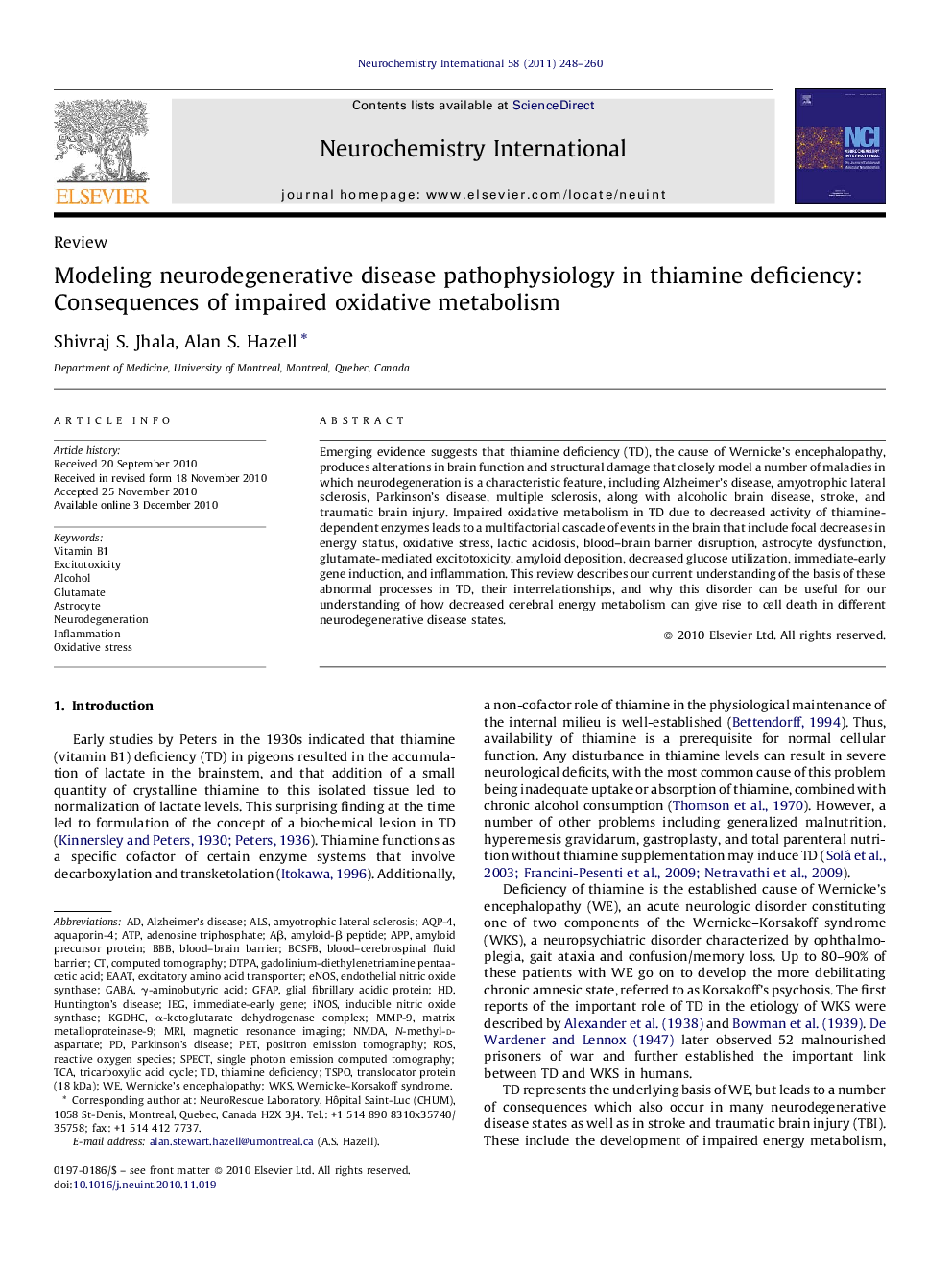| Article ID | Journal | Published Year | Pages | File Type |
|---|---|---|---|---|
| 10958319 | Neurochemistry International | 2011 | 13 Pages |
Abstract
ⶠThiamine deficiency (TD) models several aspects of neurodegenerative disease pathophysiology. ⶠImpaired oxidative metabolism plays a major role in the pathophysiology of TD and many neurodegenerative diseases. ⶠConsequences of TD include lactic acidosis, astrocyte dysfunction, oxidative stress, excitotoxicity, inflammation, blood-brain barrier dysfunction, amyloid deposition. ⶠUnderstanding the mechanisms underlying TD pathology can provide insight into how neurodegenerative disease states evolve, along with potential therapeutic strategies.
Keywords
DTPANMDAN-methyl-d-aspartateAquaporin-4APPeNOSEAATiNOSMMP-9IEGBCSFBTSPOAβtranslocator protein (18 kDa)TCAWernicke–Korsakoff syndromeAQP-4GFAPKGDHCwksROSAdenosine TriphosphateATPAstrocyteWernicke's encephalopathyamyotrophic lateral sclerosisγ-aminobutyric acidinflammationAlcoholMRIexcitotoxicitySPECTAlzheimer's diseaseALSHuntington's diseaseParkinson's diseaseMagnetic resonance imagingOxidative stressNeurodegenerationsingle photon emission computed tomographycomputed tomographyPositron emission tomographyexcitatory amino acid transporterBlood–brain barrierBBBinducible nitric oxide synthaseendothelial nitric oxide synthaseMatrix metalloproteinase-9Blood–cerebrospinal fluid barrierα-ketoglutarate dehydrogenase complexVitamin B1PETGlial fibrillary acidic proteinamyloid precursor proteinamyloid-β peptidetricarboxylic acid cycleImmediate-early genethiamine deficiencyGABAglutamateReactive oxygen species
Related Topics
Life Sciences
Biochemistry, Genetics and Molecular Biology
Cell Biology
Authors
Shivraj S. Jhala, Alan S. Hazell,
